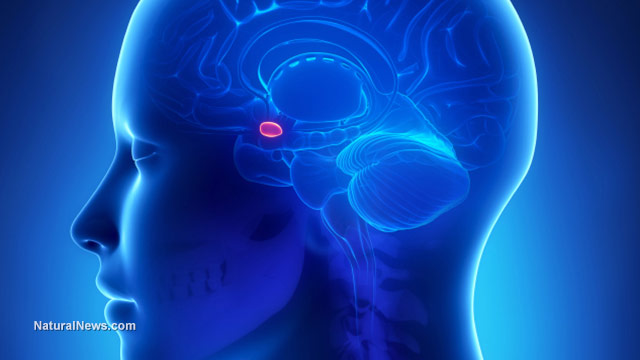Scientists discover neurons that remain “forever young” through life
04/29/2020 / By Arsenio Toledo

Researchers from the University of California, San Francisco have discovered a mysterious group of neurons in the amygdala – the part of the brain responsible for emotional processing and for governing social behaviors and interactions. These neurons, they noted, remain in an immature state throughout a person’s childhood.
While most of these neurons mature quickly once a person reaches adolescence, suggesting that they play a role in the emotional development of the brain, some stay in their immature state throughout life. For this reason, the researchers gave them the moniker “Peter Pan neurons.”
During adolescence — long after most of the brain has finished growing — the amygdala continues to expand. It gains as many as two million new neurons. Research on the amygdala suggests that this late growth spurt plays a key role in the emotional development of humans. However, this development can also go wrong.
Studies have found that it is around this time that many mood disorders, such as anxiety, depression and bipolar disorder, usually emerge. Children with autism also lack this expansion of the amygdala. (Related: Children with autism appear to lose neurons related to social and emotional behavior as they age, study finds.)
Researchers examined postmortem brains
According to Shawn Sorrells, lead author of the study and an assistant professor of neuroscience at the University of Pittsburgh, most of the cells in the brain are already mature by the time a person is born.
“It’s fascinating that these [the Peter Pan neurons] are some of the very last cells to mature in the human brain, and most do so during puberty, precisely when huge developments in emotional intelligence are going on.”
In their study, published in the journal Nature Communications, Sorrells and his team tried to understand the Peter Pan neurons and their role in the rapid growth of the amygdala during childhood. To do this, they examined the amygdalas of 49 human brains postmortem. The age of these brains ranged from 20-weeks old to 78-years old.
Using molecular and anatomical techniques, the researchers determined the function and maturity of the Peter Pan neurons. They found that the majority of them are concentrated in the paralaminar nucleus during childhood; but this population declines rapidly during adolescence. This, according to the researchers, could help explain the rapid growth of the amygdala during adolescence. However, Sorrells and his team weren’t able to uncover the exact role these cells play in the rapid emotional development undergone by adolescents.
The brain may be keeping Peter Pan neurons as reserves
The number of immature cells in the paralaminar nucleus declines from around 90 percent to 70 percent between birth and the age of 13. But by the end of adolescence, only about 20 percent of the neurons in that brain region remain the same.
Sorrells and his team noted that as the immature Peter Pan cells disappear, they are replaced by mature excitatory neurons – neurons that trigger a positive change. This suggests that when the Peter Pan cells mature, they take their place in the amygdala, where various emotions are processed. The timing of their development suggests that they may be part of the brain’s emotional processing circuitry, but Sorrells is quick to point out that their study didn’t have enough evidence.
“You could imagine these immature cells let the brain continue to sculpt the structure of neural circuits and their growth once you are out in the world experiencing what it’s like,” said Sorrells. “Of course, that’s just speculation at this point – one of the fascinating questions these findings open up for future study.”
On the other hand, the researchers also found that some neurons in the amygdala remain immature even until old age. In their previous study, Sorrells and his colleagues reported that the formation of new neurons in the brain declines during childhood and occurs very rarely in adulthood. Their new finding, therefore, suggests that the brain may be keeping these Peter Pan neurons as reserves because of this decline. The researchers hypothesized that these new cells may be used in old age to maintain the flexibility of the brain’s emotional responses.
For more exciting research about how the human brain functions, be sure to check out the articles at Brain.news.
Sources include:
Tagged Under: adolescence, amygdala, brain development, brain function, brain health, discoveries, emotional development, emotional processing, mental health, nervous system, Peter Pan neurons, research
RECENT NEWS & ARTICLES
COPYRIGHT © 2017 MIND NEWS



















